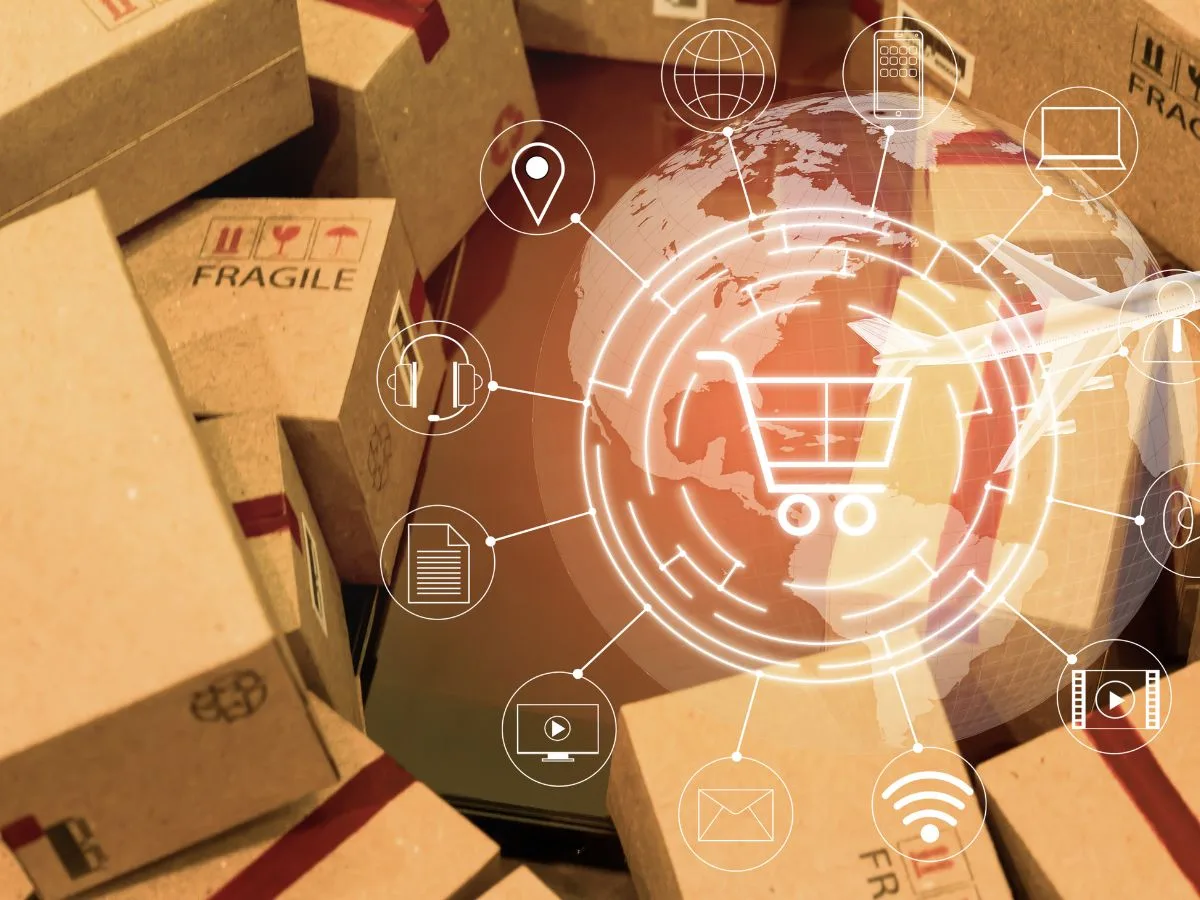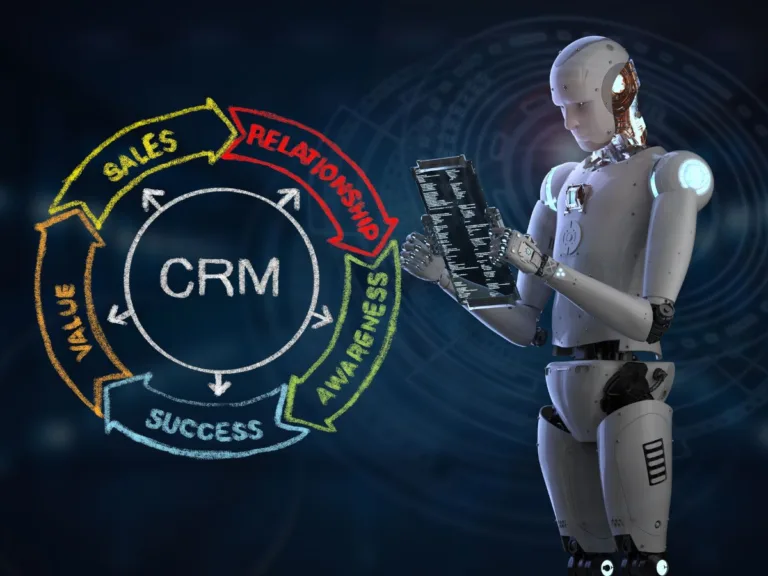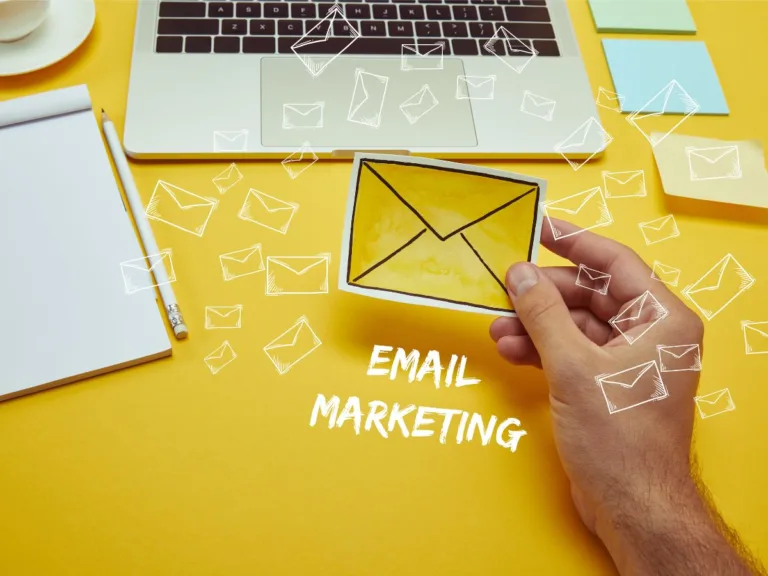Where to Begin with Ecommerce Marketing Automation
Overwhelmed by the world of ecommerce marketing automation?
You’re not alone.
With the potential to boost sales, streamline processes, and improve customer engagement, it’s crucial for online retailers to harness the power of automation. However, with so many tools and strategies available, knowing where to begin can be daunting for beginners.
Fear not, this guide will explore the important steps to kickstart your ecommerce marketing automation journey. From understanding your goals and audience to selecting the right tools and setting up effective campaigns, you’ll be equipped with the knowledge to make informed decisions and drive success for your online store.
Key Takeaways:
- Understand Your Audience: Before implementing ecommerce marketing automation, it is crucial to have a deep understanding of your target audience’s behaviors, preferences, and pain points.
- Start with Lead Nurturing: Utilize automation to guide leads through the sales funnel by providing relevant content, personalized recommendations, and timely follow-ups.
- Implement Cart Abandonment Emails: Reduce cart abandonment rates by setting up automated emails that remind customers of their abandoned carts and encourage them to complete the purchase.
- Personalize Customer Experiences: Use automation to create personalized experiences for customers based on their browsing history, past purchases, and preferences, increasing engagement and loyalty.
- Analyze and Optimize: Regularly analyze the performance of your automation strategies, test different variables, and optimize based on the results to continuously improve your ecommerce marketing efforts.
Understanding Marketing Automation
Definition and Core Elements
Automation in marketing refers to the use of software tools to streamline, automate, and measure marketing tasks and workflows. It allows businesses to target customers with automated messages across email, web, social media, and text. The core elements of marketing automation include lead nurturing, segmentation, personalized messaging, and tracking and reporting.
The Evolution of Automation in Ecommerce
To truly comprehend the impact of automation in ecommerce, we need to look at its evolution over the years. Initially, automation in ecommerce was limited to simple email marketing campaigns and basic segmentation. However, with advancements in technology and data analytics, automation in ecommerce has evolved to encompass complex workflows, real-time personalization, and behavioral triggers.
The ability to segment customers based on their behavior and interests, send targeted messages at the right time, and analyze campaign performance in real-time are some of the most important aspects of automation in ecommerce. However, it’s vital to note that while automation can greatly enhance efficiency and effectiveness in marketing, it also comes with risks such as data privacy concerns and the potential for impersonal communication.
Setting the Stage for Automation
Identifying Your Marketing Goals
Any successful ecommerce marketing automation strategy begins with a clear understanding of your marketing goals. One of the first steps is to establish what you want to achieve through automation. Whether it’s increasing sales, improving customer retention, or boosting engagement, having clearly defined goals will help guide your automation initiatives.
Mapping the Customer Journey
Any effective ecommerce marketing automation strategy involves mapping out the customer journey. Understanding how customers interact with your brand at each touchpoint can help you deliver targeted messages and offers at the right time. By identifying key stages in the customer journey, you can tailor your automation workflows to address customer needs and drive them towards making a purchase.
Stage: Mapping the Customer Journey is crucial in creating personalized and effective marketing automation campaigns. By breaking down the customer journey into stages, you can effectively target customers with the right messaging at the right time, increasing the chances of conversion.
Your ecommerce marketing automation success hinges on how well you understand your marketing goals and map out the customer journey. Take the time to analyze data, identify pain points, and leverage automation tools to streamline your marketing efforts. With a well-defined strategy in place, you can optimize campaigns and drive better results for your ecommerce business.
Choosing the Right Ecommerce Marketing Automation Tools
Comprehensive Platforms vs. Specialized Services
Now, when it comes to selecting the right ecommerce marketing automation tools, one of the first decisions you’ll need to make is whether you want to go with a comprehensive platform or specialized services. Comprehensive platforms offer a wide range of features under one roof, allowing you to automate various marketing tasks seamlessly. On the other hand, specialized services focus on specific aspects of marketing automation, providing in-depth solutions in a particular area.
Key Features to Look For
Services being offered by marketing automation tools vary significantly, so it’s crucial to identify the key features that are most important to your ecommerce business. Here are some main features to look for:
- Lead Scoring: Prioritize leads based on their behavior and engagement.
- Personalization: Tailor marketing messages to individual customers.
- Multi-Channel Marketing: Reach customers across various platforms.
- Analytics and Reporting: Track the performance of your campaigns.
Any marketing automation tool you choose should offer these necessary features to help you run successful campaigns and drive conversions.
The integration of these tools with your existing ecommerce systems is crucial for streamlining your marketing efforts and ensuring a seamless customer experience. Make sure the marketing automation tool you select can integrate with your current ecommerce platform, CRM system, and other relevant tools to maximize efficiency and results.
Integration with Existing Ecommerce Systems
Features such as seamless integration with CRM systems and ecommerce platforms can make a significant difference in how effectively you can manage your marketing campaigns. By integrating your marketing automation tools with your existing systems, you can ensure data consistency and efficiency in your marketing efforts.
Ecommerce marketing automation tools that offer easy integration with your current systems can help you streamline processes, eliminate manual tasks, and ultimately drive better results for your business.
Implementing Marketing Automation in Your Ecommerce Business
Building Your Automation Workflows
For Ecommerce businesses looking to implement marketing automation, building effective automation workflows is key to success. Start by mapping out your customer journey and identifying touchpoints where automation can enhance the customer experience. Whether it’s welcoming new subscribers, nurturing leads, or re-engaging dormant customers, automation can streamline the process and drive conversions.
Identify goals for each automation workflow, whether it’s increasing sales, boosting engagement, or reducing cart abandonment. Leverage automation tools to set triggers, create personalized content, and measure the effectiveness of each workflow. Continuously analyze data and make adjustments to optimize your automation strategies for maximum impact.
Segmenting Your Audience for Personalization
With Ecommerce marketing automation, segmenting your audience for personalized messaging is crucial. By dividing your customers into specific groups based on behavior, preferences, and demographics, you can deliver targeted content that resonates with each segment. Utilize data from past purchases, browsing history, and interactions to create tailored marketing campaigns that drive engagement and loyalty.
Another way to segment your audience is by creating buyer personas that represent different customer profiles. By understanding the unique needs and preferences of each persona, you can craft more relevant and compelling marketing messages that lead to higher conversion rates and customer satisfaction.
Ensuring GDPR Compliance and Data Privacy
Marketing automation in Ecommerce should always prioritize GDPR compliance and data privacy to build trust with customers and avoid legal repercussions. Make sure your automation tools have built-in features that allow for compliance with data protection regulations. Obtain explicit consent from customers before collecting their data and provide clear opt-in/opt-out options for communication preferences.
Regularly audit your data practices and ensure that data security measures are in place to protect sensitive information. Train your team on GDPR guidelines and regularly update your privacy policy to reflect any changes in regulations to maintain transparency and trust with your customers.
Critical Marketing Automation Strategies for Ecommerce
Email Marketing Automation
Automation is key to successful email marketing in the world of ecommerce. Setting up automated email campaigns can help you engage with your customers at the right time and with the right message. You can create personalized emails based on customer behavior, such as browsing history or purchase patterns. By sending targeted and relevant emails, you can increase customer loyalty, drive repeat purchases, and boost overall sales.
Cart Abandonment Strategies
Any ecommerce business knows the pain of cart abandonment. This is where automated cart abandonment strategies come into play. Sending a series of reminder emails to customers who abandon their carts can significantly increase conversion rates. Offering incentives like discounts or free shipping can entice customers to complete their purchase. By implementing effective cart abandonment strategies, you can recover lost sales and improve your bottom line.
Strategies for cart abandonment can also include retargeting ads on social media or other websites to remind customers of the products they left behind. You can use dynamic content to show the exact items that were in their cart, making it easier for them to pick up where they left off.
Upselling and Cross-Selling Techniques
Techniques for upselling and cross-selling can be automated to maximize revenue opportunities. Upselling involves encouraging customers to purchase a more expensive version of a product they are interested in, while cross-selling involves suggesting complementary products. By analyzing customer data and behavior, you can automate product recommendations to show customers items they are likely to be interested in based on their past purchases or browsing history.
Marketing automation tools can help you implement these techniques effectively across your ecommerce website, increasing the average order value and customer satisfaction. By leveraging automated upselling and cross-selling strategies, you can maximize the lifetime value of each customer and drive sustainable growth for your ecommerce business.
Measuring Success and Optimizing Campaigns
Unlike traditional marketing methods, ecommerce marketing automation allows you to track, measure, and analyze the performance of your campaigns with precision. This data-driven approach enables you to make informed decisions and optimize your marketing efforts for maximum efficiency and effectiveness.
Establishing Key Performance Indicators (KPIs)
KPIs are vital metrics that help you evaluate the success of your ecommerce marketing automation campaigns. These indicators can include conversion rates, click-through rates, customer retention rates, and more. By setting clear KPIs at the outset, you can monitor the performance of your campaigns and make strategic adjustments to achieve your business goals.
A/B Testing and Continuous Improvement
Campaigns A/B testing involves creating multiple versions of a marketing campaign and comparing their performance to determine which one yields better results. This iterative process allows you to refine your campaigns based on real-time data and audience feedback. Continuous improvement is key to optimizing your marketing automation efforts and enhancing the overall customer experience.
A cost-effective and efficient way A/B testing can improve your email marketing open rates, click-through rates, and conversion rates. By testing different elements such as subject lines, call-to-action buttons, and email content, you can identify the most effective strategies and refine your campaigns for better results.
Leveraging Analytics for Data-Driven Decisions
Campaigns Data-driven decision-making is the backbone of successful ecommerce marketing automation. By leveraging analytics tools, you can gain valuable insights into customer behavior, preferences, and trends. This information allows you to tailor your campaigns to meet the specific needs of your target audience and drive more conversions.
Understanding customer demographics, purchasing patterns, and engagement metrics can help you personalize your marketing messages and deliver relevant content that resonates with your audience. By analyzing and interpreting data from your ecommerce marketing automation efforts, you can make informed decisions that lead to increased sales and long-term customer loyalty.
Overcoming Common Challenges in Ecommerce Marketing Automation
Avoiding Over-Automation and Keeping the Human Touch
To excel in ecommerce marketing automation, it’s necessary to strike a balance between automation and the human touch. Over-automation can lead to a loss of personalization and authenticity in your marketing efforts, alienating your customers. Customers value authentic interactions and appreciate personalized messages that resonate with their needs and preferences. To avoid over-automation, ensure that your automated campaigns are designed to enhance the customer experience rather than replace it entirely.
Staying Up-to-Date with Emerging Technologies
To stay competitive in the dynamic world of ecommerce marketing, it’s crucial to stay up-to-date with emerging technologies. Emerging technologies such as AI, chatbots, and machine learning are reshaping the landscape of marketing automation, offering innovative ways to engage with customers. By leveraging these technologies, you can improve efficiency, personalize customer interactions, and drive conversions. Keep a close eye on industry trends and continuously update your marketing strategies to incorporate the latest technologies to stay ahead of the curve.
Overcoming Common Challenges in Ecommerce Marketing Automation requires a strategic approach that combines automation with human-centered marketing practices and a proactive stance towards adopting new technologies. By finding the right balance and staying ahead of the technological curve, you can optimize your marketing efforts and drive success in the competitive world of ecommerce.
Beyond the Basics
Once again, as you become more comfortable with the basics of ecommerce marketing automation, it’s time to probe into more advanced strategies to take your campaigns to the next level.
Advanced Automation Strategies
- Segmentation:
| Definition | Dividing your audience into smaller groups based on specific criteria. |
| Benefits | Allows for highly personalized and targeted communication. |
- Predictive Analytics:
| Definition | Using data and algorithms to forecast future trends and behaviors. |
| Benefits | Helps in anticipating customer needs and making proactive marketing decisions. |
Integration with AI and Machine Learning
To stay ahead of the curve, consider integrating your ecommerce marketing automation with AI and machine learning technologies. These advanced tools can significantly enhance your campaigns by analyzing vast amounts of data in real-time to automate decision-making processes. By leveraging AI algorithms, you can personalize recommendations, predict customer behavior, and optimize your marketing strategies for better results. The ability to adapt and learn from customer interactions sets AI-powered automation apart from traditional methods, making it a valuable asset for any ecommerce business looking to scale and improve its marketing efforts.
Final Words
Conclusively, implementing marketing automation in your ecommerce strategy is necessary for scalability, efficiency, and customer engagement. By automating tasks like email campaigns, abandoned cart reminders, and personalized product recommendations, you can free up time to focus on other aspects of your business while providing a seamless experience for your customers. Start by identifying your goals, choosing the right automation tools, and creating a solid strategy that aligns with your brand and target audience.
Keep in mind, ecommerce marketing automation is not a one-size-fits-all solution. It requires continuous monitoring, testing, and optimization to ensure its effectiveness. Stay informed about industry trends and best practices to stay ahead of the competition and make the most out of your automation efforts. With the right approach, you can streamline your marketing efforts, increase sales, and build long-lasting relationships with your customers.
FAQ
Q: What is ecommerce marketing automation?
A: Ecommerce marketing automation refers to the use of software and technology to automate and streamline marketing tasks and processes within an ecommerce business.
Q: Why is ecommerce marketing automation important?
A: Ecommerce marketing automation is important because it can help businesses save time, increase efficiency, personalize customer experiences, and drive sales by delivering the right message to the right person at the right time.
Q: What are the key benefits of using ecommerce marketing automation?
A: Some key benefits of using ecommerce marketing automation include increased productivity, improved customer segmentation, personalized communication, better customer retention, and higher conversion rates.
Q: How can I get started with ecommerce marketing automation?
A: To get started with ecommerce marketing automation, you should first define your goals, choose the right automation platform, segment your audience, create engaging content, set up automated workflows, test and optimize your campaigns, and measure your results.
Q: What are some popular ecommerce marketing automation tools?
A: Some popular ecommerce marketing automation tools include Mailchimp, Klaviyo, Omnisend, ActiveCampaign, and HubSpot. These tools offer a range of features such as email marketing, segmentation, workflow automation, and reporting.
Q: How can I measure the success of my ecommerce marketing automation campaigns?
A: To measure the success of your ecommerce marketing automation campaigns, you can track metrics such as open rates, click-through rates, conversion rates, revenue generated, customer retention, and return on investment (ROI).
Q: What are some best practices for implementing ecommerce marketing automation?
A: Some best practices for implementing ecommerce marketing automation include personalizing your messaging, segmenting your audience, testing different strategies, optimizing your campaigns based on data, integrating your automation tools with other systems, and staying updated on industry trends.







Приветствую, искатели рождественского чуда! В преддверии самых сказочных дней в году, когда сердце замирает в ожидании волшебства, я хочу поделиться с вами секретом идеальной новогодней ели. И имя ей – величественная пихта Нордмана!
Забудьте о мимолетной красоте и осыпающихся иголках! Нордманская пихта – это долговечность и элегантность в одном флаконе. Представьте себе: стройная красавица с густой, насыщенной зеленью, которая гордо возвышается в вашей гостиной, озаряя все вокруг своим благородством. Ее мягкие, неколючие иголки так приятно трогать, а ветви идеально расположены для украшения любыми игрушками. Подскажите где пихта датская пихта нордмана
Гидравлические моторы – это мощные и универсальные устройства, преобразующие гидравлическую энергию в механическую работу. Они находят широкое применение в различных отраслях промышленности, где требуется высокая мощность и надежность в компактном исполнении.
Принцип работы гидравлического мотора основан на использовании жидкости под давлением для вращения вала. Жидкость, как правило, гидравлическое масло, подается в мотор под высоким давлением и воздействует на поршни, шестерни или лопасти, вызывая их перемещение. Это перемещение преобразуется во вращательное движение выходного вала, который может быть соединен с различным оборудованием. Подскажите где лучший мотор ремонт
Разбил машину и теперь передо мной дилемма: что делать с тем, что осталось? По кускам собирать не вариант – сумма ремонта превышает стоимость автомобиля вдвое. Восстановлению не подлежит. Остается один выход – продать, но кому? На разборку? Вряд ли там дадут адекватную цену. В интернете видел варианты продажи битых автомобилей целиком, но заморачиваться с переоформлением и поиском покупателя совсем нет желания и времени.
И тут я задумался о самом очевидном – лом. Сдать на металл и забыть, как страшный сон. Просто, быстро и, главное, без лишней головной боли. Но с другой стороны, гложет мысль: вдруг там еще есть что-то ценное? Может быть, двигатель, коробка передач, какие-то детали салона… Все-таки машина была не такая уж и старая. Где сдать машину на запчасти
Сегодняшний день — минус настроение, плюс вмятина. Подрезали, я увернулся, но неудачно. Хочу понять: лучше идти по ОСАГО или делать всё самому, чтобы не портить историю? Что скажете — как правильнее? Подскажите, может продажа автомобиля на разборку